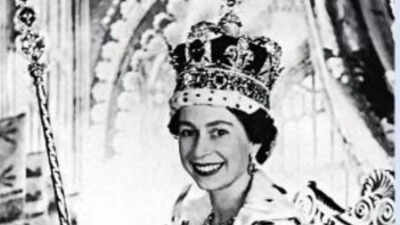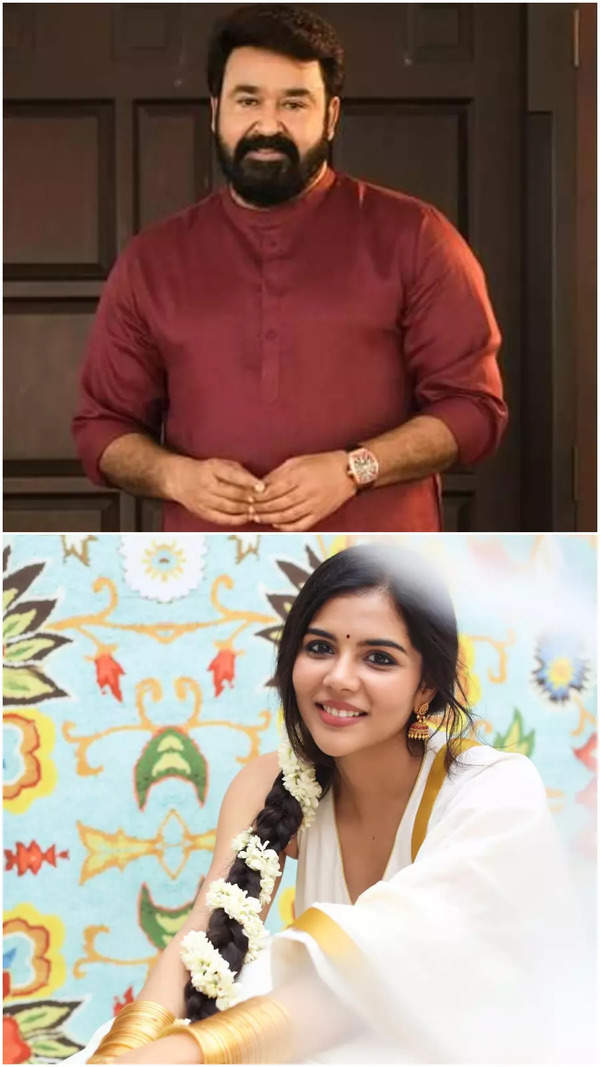Top Searches
- News
- World News
- UK News
- Sovereign grace
Sovereign grace

Queen Elizabeth
LONDON: Britannia may no longer rule the waves , but as its quiet but resolute sovereign, Queen Elizabeth II captured the imagination of the world, steering the British royal family through highs and lows and striving to bring the institution closer to the public even as it attempted to keep its image unaffected by controversy. Here’s how her 70-year reign played out:
1952-1977 | The First 25 Years
Ascending the throne at a time when Britain was still recovering from the destruction of World War II and had seen its in? uence as a world power wane, including through the loss of ‘crown jewel’ India, the young queen had her task cut out as a ‘focus for national identity and unity’. Expected to devote her time generously to causes local and global, Elizabeth II went all out to assert Britain’s soft power, in the process travelling ‘more widely than any other monarch’. She soon became the ? rst reigning British monarch to visit Australia and New Zealand – a feat she would repeat with South America and, later, West Asia. In 1961, she visited India on the ? rst tour by a British royal in 50 years
LINE OF SUCCESSION1 Charles, Prince of Wales (73) |
Charles, as queen’s eldest son, inherits the sovereign title. He became the heir apparent at age 3. His wife though will not be called queen. A pact was made in 2005, at time of Charles and Camilla’s wedding that she will be princess consort. Though Charles can change her title to queen now
1977-2005| Firefighting For The Family
The family Philip and Elizabeth II started comprises four children, eight grandchildren and 12 great-grandchildren. At its core, Britain’s ? rst couple enjoyed an enduring relationship, becoming the ? rst in the royal family to celebrate their diamond wedding anniversary when they completed 60 years of married life in 2007. But it is the marital troubles of her children that kept the public glare on the British royalty and marked, arguably, the most challenging period of Elizabeth II’s reign h
Described by Elizabeth II as the ‘annus horribilis’ of her monarchy, 1992 saw her children Charles and Andrew separate from theirspouses while Anne got divorced. Charles’s wife Diana’s revelations of her family ties to the media, and her subsequent death in a car crash also painted the royalty
in a negative light over perceived insensitivity and for remaining ensconced in an ivory tower. In 2002, the 50th year of her reign, she lost her mother – the Queen Mother Elizabeth – and her sister Margaret Rose
The turn of the 21st century saw the royal household put the controversies of the past decade behind as much of the British public backed the wedding of Charles with Camilla Parker Bowles in 2005
2005-2022| Longest-Serving British Sovereign
h The weddings of Charles’s sons William and Harry, in 2011 and 2018, respectively, brought cheer to the British Isles, but controversy would return to dog the family over Andrew’s ties with billionaire sex offender Jeffrey Epstein, which led to him relinquishing his titles and royal duties in 2022, while the queen’s grandson Harry would leave the royal family with his wife Meghan Markle in 2020 h
In 2015, Elizabeth II became the longest-reigning British monarch, eclipsing Queen Victoria’s rule of 63+ years. Altogether, she has had 15PMs hold of? ce at her pleasure and also serves as the head of state of at least 14 other Commonwealth countries.
During her reign she brought the British royalty closer to the public, including by allowing its domestic life to be televised in the 1970s, and also demonstrated her ability to move with the times when she voluntarily agreed to pay taxes on private income in 1992.
Incidentally, all their children have their mother’s surname ‘of Windsor’, though she had created hyphenated name Mountbatten-Windsor for other descendants in 1960
1926-1952 | A Monarch By Chance
Born on April 21, 1926, Elizabeth Alexandra Mary was the eldest daughter of Prince Albert, Duke of York, and his wife, Elizabeth BowesLyon. In the normal run of things, her father would not have had an opening to the British throne, but he ascended it when his elder brother Edward VIII abdicated in his favour, a move that saw him become King George VI and made Elizabeth the heir presumptive. She is the fourth British royal from the House of Windsor, succeeding to the British throne in 1952 following the death of her father. She was 27 then. She married her distant cousin Philip Mountbatten in 1947 and gave birth to their first child, Prince Charles, in November 1948, and to Princess Anne in 1950. They were followed by Prince Andrew in 1960 and Prince Edward in 1964
1952-1977 | The First 25 Years
Ascending the throne at a time when Britain was still recovering from the destruction of World War II and had seen its in? uence as a world power wane, including through the loss of ‘crown jewel’ India, the young queen had her task cut out as a ‘focus for national identity and unity’. Expected to devote her time generously to causes local and global, Elizabeth II went all out to assert Britain’s soft power, in the process travelling ‘more widely than any other monarch’. She soon became the ? rst reigning British monarch to visit Australia and New Zealand – a feat she would repeat with South America and, later, West Asia. In 1961, she visited India on the ? rst tour by a British royal in 50 years
LINE OF SUCCESSION1 Charles, Prince of Wales (73) |
Charles, as queen’s eldest son, inherits the sovereign title. He became the heir apparent at age 3. His wife though will not be called queen. A pact was made in 2005, at time of Charles and Camilla’s wedding that she will be princess consort. Though Charles can change her title to queen now
1977-2005| Firefighting For The Family
The family Philip and Elizabeth II started comprises four children, eight grandchildren and 12 great-grandchildren. At its core, Britain’s ? rst couple enjoyed an enduring relationship, becoming the ? rst in the royal family to celebrate their diamond wedding anniversary when they completed 60 years of married life in 2007. But it is the marital troubles of her children that kept the public glare on the British royalty and marked, arguably, the most challenging period of Elizabeth II’s reign h
Described by Elizabeth II as the ‘annus horribilis’ of her monarchy, 1992 saw her children Charles and Andrew separate from theirspouses while Anne got divorced. Charles’s wife Diana’s revelations of her family ties to the media, and her subsequent death in a car crash also painted the royalty
in a negative light over perceived insensitivity and for remaining ensconced in an ivory tower. In 2002, the 50th year of her reign, she lost her mother – the Queen Mother Elizabeth – and her sister Margaret Rose
The turn of the 21st century saw the royal household put the controversies of the past decade behind as much of the British public backed the wedding of Charles with Camilla Parker Bowles in 2005
2005-2022| Longest-Serving British Sovereign
h The weddings of Charles’s sons William and Harry, in 2011 and 2018, respectively, brought cheer to the British Isles, but controversy would return to dog the family over Andrew’s ties with billionaire sex offender Jeffrey Epstein, which led to him relinquishing his titles and royal duties in 2022, while the queen’s grandson Harry would leave the royal family with his wife Meghan Markle in 2020 h
In 2015, Elizabeth II became the longest-reigning British monarch, eclipsing Queen Victoria’s rule of 63+ years. Altogether, she has had 15PMs hold of? ce at her pleasure and also serves as the head of state of at least 14 other Commonwealth countries.
During her reign she brought the British royalty closer to the public, including by allowing its domestic life to be televised in the 1970s, and also demonstrated her ability to move with the times when she voluntarily agreed to pay taxes on private income in 1992.
Incidentally, all their children have their mother’s surname ‘of Windsor’, though she had created hyphenated name Mountbatten-Windsor for other descendants in 1960
1926-1952 | A Monarch By Chance
Born on April 21, 1926, Elizabeth Alexandra Mary was the eldest daughter of Prince Albert, Duke of York, and his wife, Elizabeth BowesLyon. In the normal run of things, her father would not have had an opening to the British throne, but he ascended it when his elder brother Edward VIII abdicated in his favour, a move that saw him become King George VI and made Elizabeth the heir presumptive. She is the fourth British royal from the House of Windsor, succeeding to the British throne in 1952 following the death of her father. She was 27 then. She married her distant cousin Philip Mountbatten in 1947 and gave birth to their first child, Prince Charles, in November 1948, and to Princess Anne in 1950. They were followed by Prince Andrew in 1960 and Prince Edward in 1964
FOLLOW US ON SOCIAL MEDIA
FacebookTwitterInstagramKOO APPYOUTUBE
Start a Conversation
end of article









